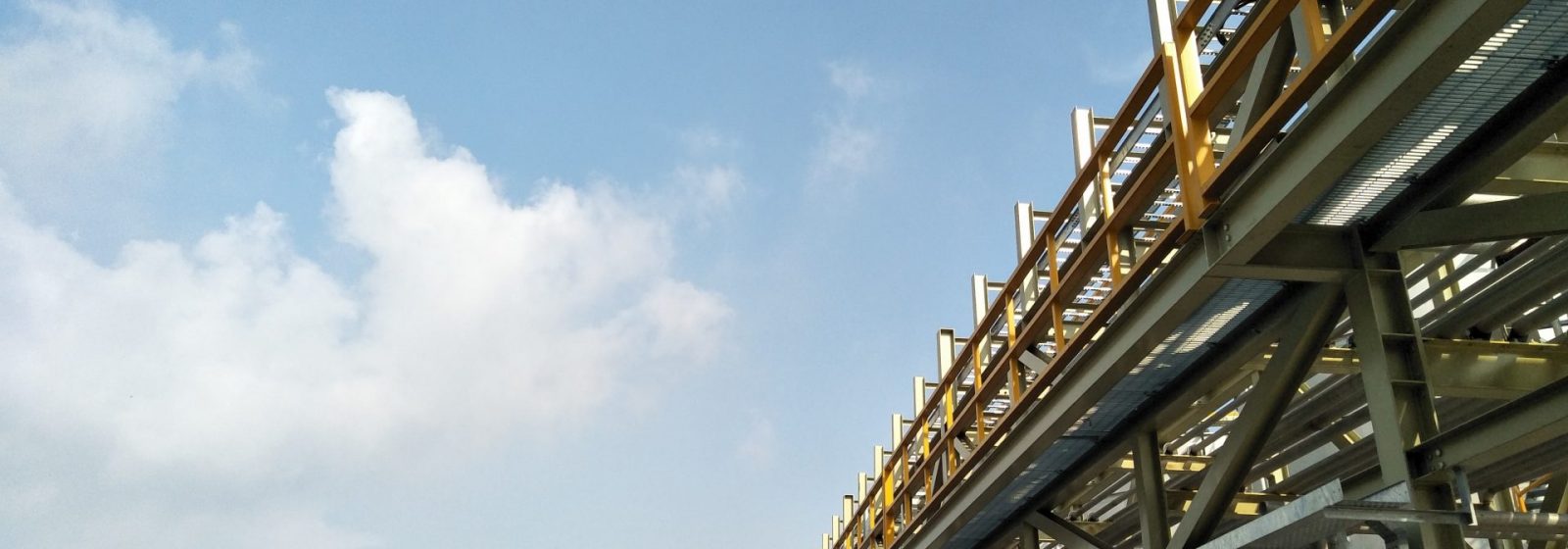
Industrial Pipe Rack Engineering Assessment
Date - 2020When our client was facing large scale maintenance and repairs on kilometres of pipe racks at its oil refinery, we were engaged to investigate and assess the need for repairs. After investigation, we developed a practical scope to ensure the repairs carried out were fit for purpose based on existing loads and structural capacity and unnecessary repairs were avoided or deferred.
Background
Located in the North Island, this industrial production and manufacturing plant processes a wide range of products imported from around the world and produces world-class clean fuels.
Although originally built in the early sixties, a major expansion and upgrade of the original plant in the mid-eighties resulted in a relatively modern industrial plant. The continual upgrading of plant and preventative maintenance ensures world-class reliability and efficiency.
The Challenge
Many kilometres of pipe racks are used to convey product around the Marsden Point site between the jetty, process areas, and storage tanks. The deteriorating condition of the pipe racks, which are between 35 and 50 years old, had been a problem for a considerable time.
Internal inspectors had identified many condition and coating failures which indicated the need for large scale maintenance and repairs. The client says, “We thought that the only way to stop this deterioration was to repair or replace like for like which is expensive, time-consuming and puts people at risk due to working at heights.”
We were engaged to consider and advise on the repairs required of the pipe racks to ensure continued reliability and efficiency.
GRIT’s Approach
Our team worked closely with the client’s civil team to understand the actual (rather than design) loads on the pipe racks in each area. These actual loads were then applied to our structural model resulting in significant reduction in demand and increase in corrosion allowance.
A comprehensive structural analysis of the pipe rack was then carried out and the seismic loads at each level were calculated through a review of piping drawings and on-site verification using ‘Practice Note – Seismic Resistance of Pressure Equipment’ (PN19).
The original approach with this type of project is to allow 10% structural corrosion loss but we challenged this thinking and encouraged an investigation, completed a durability assessment to understand the real allowable loss. This would ensure decisions around maintenance allowed for the required service life remaining of the pipe rack structures.
Where seismic strengthening was required, we provided concept sketches with a focus on practicality and ease of construction. All of these proposed solutions avoided the need for site welding – a potentially high-risk activity on a site containing live hydrocarbons.
The Outcome
Our engineering team were able to use their extensive experience with condition assessment, durability and corrosion rate calculations, and reverse engineering existing designs to:
- Challenge the need for excessive and unnecessary maintenance and repair
- Develop practical repair solutions that are constructible and fit for purpose
- Provide confidence that the structures will meet the service life requirements with significantly reduced repairs scopes.
Due to the outcome of detailed engineering and the development of an assessment tool, the client’s management and inspectors have been enabled to prioritise repairs and accurately forecast maintenance expenditure. This approach saved $Ms of unnecessary maintenance and associated wasted time and resources, as well as reduced the organisation’s potential carbon footprint.
Key Highlights
- Detail – Comprehensive structural analysis and modelling of industrial pipe racks to understand the real allowable corrosion loss
- Fit-for-purpose – Development of an assessment tool based on a fit-for-purpose approach utilising actual loads and the remaining service life required
- Pragmatic – Proposed concept sketches for seismic strengthening were focussed on practicality, ease of construction, and avoiding high-risk site activity
- Scope – Significant reduction in maintenance scope of work
- Environment – Significant positive impact on the environment – less dust, materials like abrasive chemicals for coatings being imported, and plastic wrapping when it was not actually required
- Savings – The cost of GRIT’s assessment was minor when compared to the savings from avoiding and deferring repair and maintenance costs that are not yet required